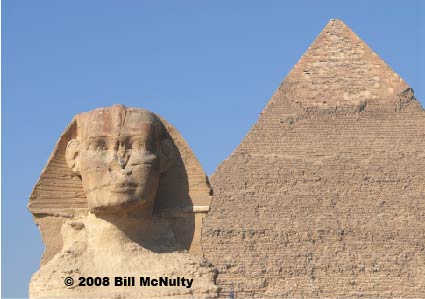
An Ancient Pyramid is Getting a Glow-up. Archaeologists are Down on it.
By Kelsey Ables
February 1, 2024 at 2:14 a.m. EST
An announcement that one of the pyramids of Giza is getting a facelift has sparked concerns that the ancient wonder could be compromised by an undertaking some archaeologists say does not meet scientific standards — and that some are describing as a bid to lure tourists.
Egypt's Ministry of Tourism and Antiquities said last week that a joint Egyptian-Japanese archaeological mission will study, document and restore granite blocks that once made up the exterior of the pyramid of Menkaure, the smallest of the three major pyramids.
In videos posted on Facebook, Mostafa Waziry, secretary general of the Supreme Council of Antiquities, said that the pyramid — built around 2490 B.C. — was the only one of the country's 124 or so pyramids to have a granite external cladding. It has "five or six layers" of granite blocks, but originally had 16 or more, he said.
Waziry said the restoration work would take at least three years and described it as the "project of the century."
But many observers did not share in the hype. The videos, which showed workers digging up blocks at the base of the pyramid, drew sharp criticism online and fueled concerns from experts that the attempt at restoration was more akin to desecration.
One commenter asked, "How can you think it's your job to alter the pyramid after 4,500 years?" Another pleaded, "Please respect the past, do not make Disneyland from ancient legacy."
Although the Menkaure pyramid is a part of a UNESCO World Heritage site, UNESCO said in an email that it was unaware of the project and had "written to the Egyptian authorities to ask them for more information."
Waziry and the Ministry of Tourism and Antiquities did not respond to requests for comment.
In a statement shared by Monica Hanna, an archaeologist and Egyptologist at the Arab Academy for Science, Technology and Maritime Transport, a group of archaeologists called the project "entirely unscientific" and accused those behind it of chasing publicity over legitimate archaeological inquiry. They stressed that documentation cannot occur at the same time as the excavation shown in the video.
Proceeding with the project "is tantamount to tampering with Egyptian antiquities and undermining its antiquity and history," the statement said.
It listed several concerns, including that "no archaeological or historical evidence exists" as to the blocks' original position on the pyramid, and asserts that they did not fall from it "but were left by the pyramid's workmen as unfinished business." Trying to refine the crude blocks left around the pyramid and use them as cladding would be "blatant interference with the work of the ancient Egyptians," the statement said.
Kathlyn Cooney, a professor of Egyptian art and architecture at the UCLA, pointed to the difference between conservation, which "preserves an object in the state it is in," and restoration, which "improves it, changes it, beautifies it" — and "should be avoided at all costs."
She said in an email that the facade of the Menkaure pyramid was left unfinished, which "teaches us about his kingship [and] the political affairs of the time."
"By putting blocks back, we will destroy all that data," Cooney said. "And for what? To improve on the past? Change the past?"
Ellen Francis contributed to this report.
Source: https://www.washingtonpost.com/
© 2004-2026 Bill McNulty All Rights Reserved